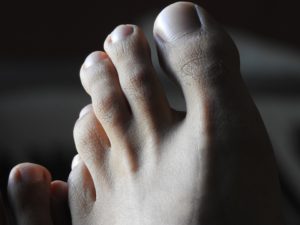Diabetes Foot Care: How To Check and Care For Your Feet
 Strains, cuts, calluses and ulcers are the enemy to diabetics’ feet and can lead to thing s serious as amputation. However, very often diabetics with foot problems can’t feel pain in their feet, so checking your feet is the key to prevention.
Strains, cuts, calluses and ulcers are the enemy to diabetics’ feet and can lead to thing s serious as amputation. However, very often diabetics with foot problems can’t feel pain in their feet, so checking your feet is the key to prevention.
The best time to check your feet is after a bath or shower. After drying your feet, sitting in a well-lit room, check the tops and bottoms of your feet as well as your toes, in between your toes and your toenails. A lot of people find that using a mirror helps them properly inspect the bottoms of their feet especially if they have difficulty bending down. Begin by feeling your feet for bumps, lumps blisters or bruises. Next, examine closely for any cuts, sores or cracked skin. Remember that even the tiniest crack can become infected. Next you want to see if there are any patches of shiny/thin skin or areas of redness. Temperatures can also be an indication of lack of blood flow so it is important to feel if there are any temperature differences like one part warm and the other cold. You also want to take note if there is any loss of hair on the foot or along the leg. Nerve problems are also red flags, so attention should be given to any pain, tingling or numbness. Lastly you want to examine your nails, looking for ingrown toenails with red puffy skin along the nail or tenderness and pain.
Nurturing and conditioning your feet may help prevent all the things you are checking for. Begin by washing your feet daily, but make sure to do it the right way. Your feet should be washed in warm, not hot, water. Do not soak your feet because your skin will get dry and might crack. Before bathing or showering, test the water to make sure it is not too hot. You can use a thermometer (90° to 95° F is safe) or your elbow to test the water, we also recommend using talcum powder or cornstarch to keep the skin between your toes dry to prevent cracked skin and infection. Caution should be used when drying your feet not to rub too vigorously. You also want to keep the skin soft and smooth. The best way to do that is by rubbing a thin coat of lotion, cream, or petroleum jelly on the tops and bottoms of your feet. Do not put lotion or cream between your toes because this might cause an infection. Toenail care is also a big deal, trim your toenails with nail clippers after you wash and dry your feet. Trim them straight across and smooth the corners with an emery board or nail file. This prevents the nails from growing into the skin. Do not cut into the corners of the toenail. If your toenails are thick or yellowed or your nails curve and grow into the skin it is recommended to have your doctor podiatrist cut your nails for you.
